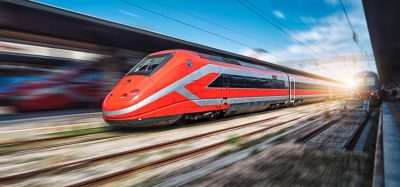First electrification system for rail freight terminals boost UK net zero plans
Posted: 17 March 2022 | Elliot Robinson (Editorial Assistant - Global Railway Review) | No comments yet
A rail freight terminal in Northamptonshire has become the first in the UK to demonstrate an electrification system, boosting plans to reach net zero.


Credit: Furrer+Frey GB
A rail freight terminal in Northamptonshire has become the first in the UK to demonstrate an innovative overhead electrification system, which could spell the end for diesel on electrified rail routes and boost the industry’s net zero ambitions. The Decarbonisation & Electrification of Freight Terminals (DEFT) project, funded by the Department for Transport and Innovate UK, has seen project partners Furrer+Frey GB, Tarmac and GB Railfreight demonstrate a new way of decarbonising rail and lessen freight’s impact on passenger journeys.
Freight trains are typically loaded and unloaded from above, preventing the use of the high voltage overhead cables used on mainline railways. As such, they still rely on diesel to move in and out of terminals and passengers can be held up by slower diesel freight trains on mainlines, or those waiting to be moved into a depot by a shunter.
Engineers from Furrer+Frey GB designed a Moveable Overhead Conductor system where overhead equipment supplying electricity to the locomotives can safely move away once the train is in place and return when the train needs to move again.
The system is currently trialled at an aggregate facility in Wellingborough, in partnership with GB Railfreight. If successful, the moveable overhead system could go on to be deployed at other freight terminals across the UK and support the full decarbonisation of Britain’s railways.
“It is fantastic to see winners of our First Of A Kind competition getting out there and helping transform the railways for the better,” said Rail Minister, Wendy Morton. “Making rail freight even more environmentally friendly helps us leap forward in our plans to build back greener and make the whole UK net zero by 2050.”
“The electrification of freight terminals is the biggest technological hurdle to net zero rail freight,” Noel Dolphin, Head of UK projects at Furrer+Frey GB, said. “The demonstrator shows how we can plug freight yards into electrified rail lines and operate them safely and efficiently with the locomotives we already have, meaning greener, cleaner and better journeys.”
“Rail freight is already a greener alternative to moving goods by road but innovations like the Moveable Overhead Conductor System, and electrification more broadly, will allow us to go even further,” John Smith, CEO of GB Railfreight, said. “At the same time as combatting climate change, they also bolster operations, and the reliability and efficiency of rail freight.”
Rail freight is already much greener than moving goods by road. Lorries emit nine times the emissions of rail freight per tonne kilometre. Seamless electrification for freight could begin to see slower, more polluting diesel trains being phased out. In 2018, the Government challenged the rail industry to remove all diesel-only trains from the network by 2040 as part of a drive to achieving the UK’s ambitious net zero goals, as well as to help improve air quality and reduce noise pollution.
Related topics
Cargo, Freight & Heavy-Haul, Electrification & Cabling, Sustainability/Decarbonisation, Technology & Software
Related organisations
Department for Transport (DfT), Furrer+Frey, GB Railfreight (GBRf), Innovate UK, Tarmac







